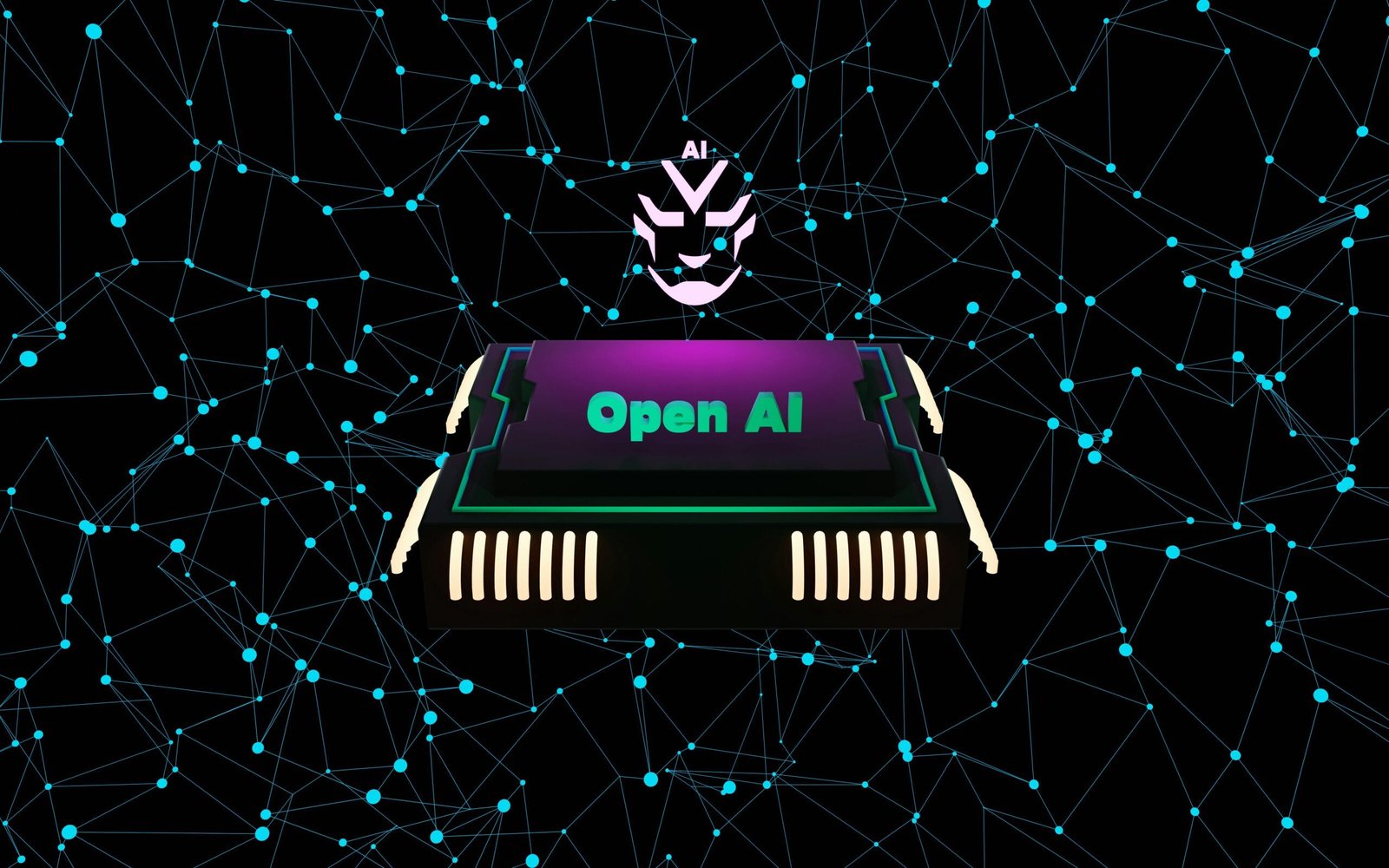
Introduction to the Internet World
The Internet world represents a vast digital landscape that has fundamentally transformed how individuals and societies communicate, conduct business, entertain themselves, and access information. Its origins trace back to the late 1960s with the development of ARPANET, an experimental network initially designed for military and academic purposes. Over the decades, this network evolved, and the advent of the World Wide Web in the early 1990s marked a significant turning point, making the internet accessible to the general public. This instant connectivity brought about profound changes in daily life, making it indispensable in modern society.
The significance of the internet is evident across various domains. In communication, it has revolutionized how individuals interact, enabling instant messaging, video conferencing, and social networking. This digital medium has bridged geographical gaps, allowing for real-time communication irrespective of physical location. Furthermore, in the realm of commerce, the internet has given rise to e-commerce, making it possible for businesses to operate on a global scale. Consumers now enjoy the convenience of online shopping, which has reshaped traditional retail landscapes.
Additionally, the internet has entirely redefined entertainment. Streaming services and content sharing platforms have altered how people consume media, leading to a shift from traditional broadcast methods to on-demand content availability. This transformation has not only affected individual preferences but has also influenced the entire entertainment industry, driving the emergence of new business models.
Access to information has seen a major enhancement as well. Vast resources are available at users’ fingertips, promoting knowledge-sharing and learning opportunities that were previously unimaginable. In conclusion, the Internet world encompasses a myriad of functions that illustrate its significance in contemporary life, influencing everything from personal interactions to global economies.
The Structure of the Internet
The Internet, often described as a vast network of interconnected devices, operates on a defined technical structure that facilitates global connectivity and data exchange. At its core, the Internet consists of numerous routers, servers, cables, and data packets, which collaborate seamlessly to transmit information across vast distances.
Routers play a pivotal role in this interconnected environment. These devices direct data packets, which contain essential information, from one network to another. When you send a request, such as visiting a website, your data travels through various routers, each determining the most efficient path to its destination. This routing process is vital in ensuring that data reaches its target quickly and reliably, demonstrating the importance of routers in the functioning of the Internet.
At the other end of the data transmission spectrum are servers. These powerful computers store, manage, and deliver content to users based on their requests. When a user accesses a website, their device communicates with a server that hosts that site, retrieving data such as text, images, and multimedia. This server-client model is foundational to internet functionality, as it allows for the dynamic serving of content based on user interactions.
The data transmitted over the Internet is encapsulated in small units known as data packets. These packets are crucial for efficient data handling, enabling the division of larger amounts of information into manageable pieces. Each packet contains both payloads (the actual data) and headers (metadata that guides the packet’s routing). As packets traverse through the network, they may take varied paths, only to be reassembled at their final destination, thus highlighting the robustness and redundancy of the Internet’s design.
Understanding the structure of the Internet sheds light on how these components integrate to support a seamless flow of information, ultimately facilitating global communication, commerce, and collaboration.
Exploring Different Layers of the Internet
The internet is a complex architecture comprising multiple layers, each playing a crucial role in the transmission and accessibility of data. Understanding these different layers is fundamental to grasping how data travels across the internet seamlessly.
The first layer is the physical layer, which encompasses the hardware components of the internet, including cables, routers, and switches. This layer is responsible for the actual transfer of raw binary data, transmitted as electrical signals or light pulses over fiber optics. Without this foundational layer, no internet connectivity would be possible, as it forms the bedrock upon which all other layers are built.
Next is the data link layer, which facilitates communication between directly connected devices. This layer manages how data packets are framed, addressing, and error detection. Protocols like Ethernet and Wi-Fi function at this level, ensuring a reliable connection that allows devices on the same local network to communicate effectively. This layer is pivotal in maintaining data integrity during transmission before it moves to the next stage.
The network layer follows, primarily responsible for the routing of data packets across multiple networks. This layer utilizes protocols such as Internet Protocol (IP) to determine the best path through which the data can reach its intended destination. It also provides logical addressing, allowing devices on different networks to identify each other uniquely, facilitating global connectivity.
Atop the network layer lies the transport layer, which ensures that data packets are delivered accurately and in the right order. Protocols like Transmission Control Protocol (TCP) and User Datagram Protocol (UDP) operate at this layer, providing mechanisms for connection-oriented communication and error-checking, as well as serving applications that require faster but less reliable delivery.
Finally, the application layer is where user-facing protocols operate. This layer encompasses everything from web browsers, email clients, to file transfer protocols. It makes use of the functions provided by the lower layers to offer meaningful services to end-users, exemplifying the practical implications of this intricate structure.
By dissecting these layers, we gain a clearer picture of how data is transmitted across the internet, each layer acting in concert to create a cohesive, functional network. Understanding these layers is essential for anyone looking to navigate the digital landscape effectively.
Web Browsers and Search Engines
Web browsers and search engines are fundamental tools that allow users to navigate the vast expanse of the internet. A web browser, such as Google Chrome, Mozilla Firefox, or Safari, functions as the interface through which individuals access and interact with web content. When a user enters a URL or queries a search term, the browser sends a request to the web server hosting the desired site, subsequently rendering the web pages for user interaction. This process encompasses various technical aspects, including rendering engines, which interpret HTML, CSS, and JavaScript, allowing for a visually engaging experience.
On the other hand, search engines, including Google, Bing, and Yahoo, play a crucial role in information retrieval. They employ complex algorithms to index and rank content across the internet, making it accessible to users through keyword searches. Understanding the significance of these algorithms can enhance one’s ability to obtain relevant results. The ranking system considers numerous factors, such as keyword relevance, website authority, and user engagement metrics, to deliver the most pertinent information at the top of the search results. Consequently, users can find useful and trustworthy resources quickly.
To optimize search results, users should implement several effective strategies. Utilizing specific and descriptive keywords in search queries can yield more precise results. Moreover, leveraging advanced search operators, like quotation marks for exact phrases or minus signs to exclude terms, allows for better-targeted information retrieval. Familiarizing oneself with the structure of URL paths or site maps can also facilitate access to deeper content within websites. Ultimately, understanding the interplay between web browsers and search engines not only streamlines the process of navigating the internet but also empowers users to harness the information available effectively.
The Role of Social Media in the Internet World
Social media has fundamentally transformed the internet landscape, reshaping how individuals and organizations communicate, build communities, and market their products or services. Platforms like Facebook, Twitter, Instagram, and LinkedIn serve as dynamic environments where users can share information, connect with others, and engage in discussions, thus revolutionizing traditional communication methods.
Prior to the emergence of social media, communication was predominantly one-directional, driven by businesses or media outlets generating content for passive consumers. Today, this paradigm has shifted dramatically; anyone can create, share, and promote content, leading to a more interactive online experience. Users no longer just consume information; they contribute to it, leading to diverse voices and opinions that shape public discourse.
The advent of social media has also facilitated community-building across the globe. People with shared interests, causes, or experiences can easily connect, forming online communities that transcend geographical boundaries. These platforms empower individuals to come together to advocate for social change, mobilize support for charitable causes, and foster relationships that may not have been possible otherwise. This collective power can significantly influence trends and popular culture, as social media channels often dictate which narratives gain traction.
Moreover, businesses have capitalized on the capabilities of social media to deploy innovative marketing strategies. Brands engage directly with consumers, fostering a sense of loyalty while gaining immediate feedback on products and services. Influencer marketing has also emerged as a potent tool, allowing brands to leverage the followings of popular figures to reach wider audiences effectively. The impact of social media extends to shaping public opinion, as viral campaigns can alter perceptions and influence political, social, and economic debates in unprecedented ways.
Cybersecurity in the Internet Age
As the digital landscape continues to evolve, the significance of cybersecurity has become paramount. With a multitude of devices connected to the internet, individuals and organizations alike face an unprecedented range of cyber threats. Common issues such as hacking, phishing, and malware not only endanger personal data but also undermine trust in digital platforms. Understanding these threats is essential for anyone seeking to navigate the internet safely.
Hacking remains one of the most pervasive threats, where unauthorized individuals gain access to sensitive information, often exploiting weaknesses in software or human psychology. Cybercriminals frequently employ tactics such as brute force attacks, password guessing, or exploiting vulnerabilities in outdated systems. These actions can lead to identity theft, financial losses, and the exposure of confidential information, making it crucial for users to maintain robust security measures.
Phishing is another significant concern in cybersecurity. This tactic involves deceiving individuals into divulging personal information, typically through emails or deceptive websites. By mimicking trusted entities, attackers can lure unsuspecting victims into revealing passwords or credit card numbers. Awareness and education are key in combating this threat; users must be trained to recognize suspicious communications and verify sources before taking any action.
Moreover, malware poses a considerable risk, characterized by malicious software designed to cause harm to systems, steal information, or gain unauthorized access. Ransomware, a type of malware, can incapacitate an organization by encrypting its data and demanding payment for a decryption key. Protecting systems against malware requires implementing security software, regular updates, and vigilant browsing habits.
To fortify personal security online, individuals should adopt best practices, including the use of strong, unique passwords, enabling two-factor authentication, and regularly monitoring account activity. Creating awareness about cybersecurity so that everyone can take proactive measures is essential in fostering a safer digital environment. By understanding these threats and adhering to essential safety practices, users can protect their personal information effectively in the ever-evolving internet age.
The Future of the Internet: Trends and Predictions
The future of the internet is poised for transformation, driven by rapid advancements in technologies such as artificial intelligence (AI), the Internet of Things (IoT), and fifth-generation wireless technology (5G). These emerging trends are set to redefine the digital landscape in various dimensions, influencing how we interact with technology and with each other.
Artificial intelligence is expected to play a pivotal role in shaping the future internet experience. With machine learning algorithms becoming more sophisticated, AI will enable the personalization of online interactions, making user experiences more tailored and efficient. For instance, AI-driven chatbots and virtual assistants will likely become integral to customer service, providing immediate assistance and enhancing user satisfaction. Additionally, AI’s ability to analyze vast amounts of data will facilitate predictive analytics, aiding businesses in making informed decisions and improving operational efficiencies.
Another significant trend is the growth of the Internet of Things. As connectivity expands, everyday devices, from home appliances to automobiles, will become increasingly interconnected. This transformation will lead to smarter homes and cities, where devices communicate seamlessly to improve quality of life and enhance energy efficiency. The integration of IoT will also enable new business models, such as subscription services for smart device functionalities, creating economic opportunities and prompting further innovation.
Furthermore, the rise of 5G technology promises to revolutionize internet connectivity, enhancing speed, reliability, and capacity. This next-generation network will facilitate the proliferation of smart technologies, enabling real-time data transmission essential for applications such as telemedicine, autonomous vehicles, and augmented reality. As 5G networks become more widely available, they will empower not just consumers but also businesses to leverage cutting-edge technology in unprecedented ways.
Overall, these trends indicate that the future internet will be more interconnected, intuitive, and responsive to individual and societal needs. The convergence of AI, IoT, and 5G technologies will not only reshape the digital landscape but also profoundly impact our everyday lives, creating new opportunities and challenges that society must navigate.
Ethical Considerations in the Internet World
The rapid evolution of the internet has led to a myriad of ethical considerations that demand careful scrutiny. One significant issue is the question of privacy. As individuals navigate the digital landscape, they leave behind a trail of personal data that can be collected, analyzed, and shared by various entities. This raises profound ethical questions regarding consent, as many users may not fully understand the extent of data collection practices or the ramifications of sharing their information online. As technology companies continue to prioritize profit over privacy, a growing concern emerges about the erosion of personal autonomy and security.
Moreover, the issue of data ownership presents another ethical challenge in the internet world. With significant portions of personal information stored on external servers, the question of who has the right to control and manage this data becomes pertinent. Individuals often lack clarity regarding their rights over the data they generate, leading to potential exploitation by corporations and third parties. This lack of transparency complicates the moral responsibility of tech companies in ensuring that users are fully informed and that their data is handled ethically and securely.
Finally, the digital divide underscores the ethical ramifications of unequal access to the internet. In an increasingly digital society, disparities in access to technology can exacerbate existing social inequalities. Individuals from marginalized communities often lack the resources necessary to participate fully in the online world, which can hinder their opportunities for education, employment, and civic engagement. Addressing these disparities requires not only technological solutions but also a commitment to equity and justice within the digital realm. Therefore, as we navigate the complexities of the internet world, it is crucial to consider the ethical implications of our online behavior and the broader societal impact of our technological advancements.
Conclusion: Embracing the Internet
The internet has fundamentally transformed how individuals communicate, access information, and engage with the world around them. It serves as a powerful tool that enables connectivity and fosters innovation. Throughout this blog post, we have explored various aspects of the digital landscape, ranging from the benefits of online resources to the potential risks associated with digital engagement. By understanding these elements, users can navigate this expansive world more effectively.
One of the key takeaways is the importance of digital literacy, which encompasses the skills necessary to search, evaluate, and utilize information found online. As the internet continues to evolve, staying informed about digital tools and trends is crucial. Enhanced awareness contributes to informed decision-making, allowing users to leverage the myriad opportunities the internet provides, such as remote work, online education, and global connectivity.
However, it is equally important to recognize the challenges associated with digital engagement. Issues such as online privacy, cybersecurity threats, and misinformation are significant concerns that users must confront. By acknowledging these risks, individuals can adopt proactive measures to protect themselves, such as using strong passwords, verifying sources of information, and being mindful of their online presence.
In embracing the vast potential of the internet, one must balance the advantages with an understanding of the accompanying responsibilities. Engaging with digital platforms should be done thoughtfully, as responsible internet use not only benefits the individual but also contributes to a safer and more informed online community. Overall, as we continue to embrace the opportunities the internet presents, cultivating a conscientious approach to its use becomes imperative for both personal and collective advancement.








